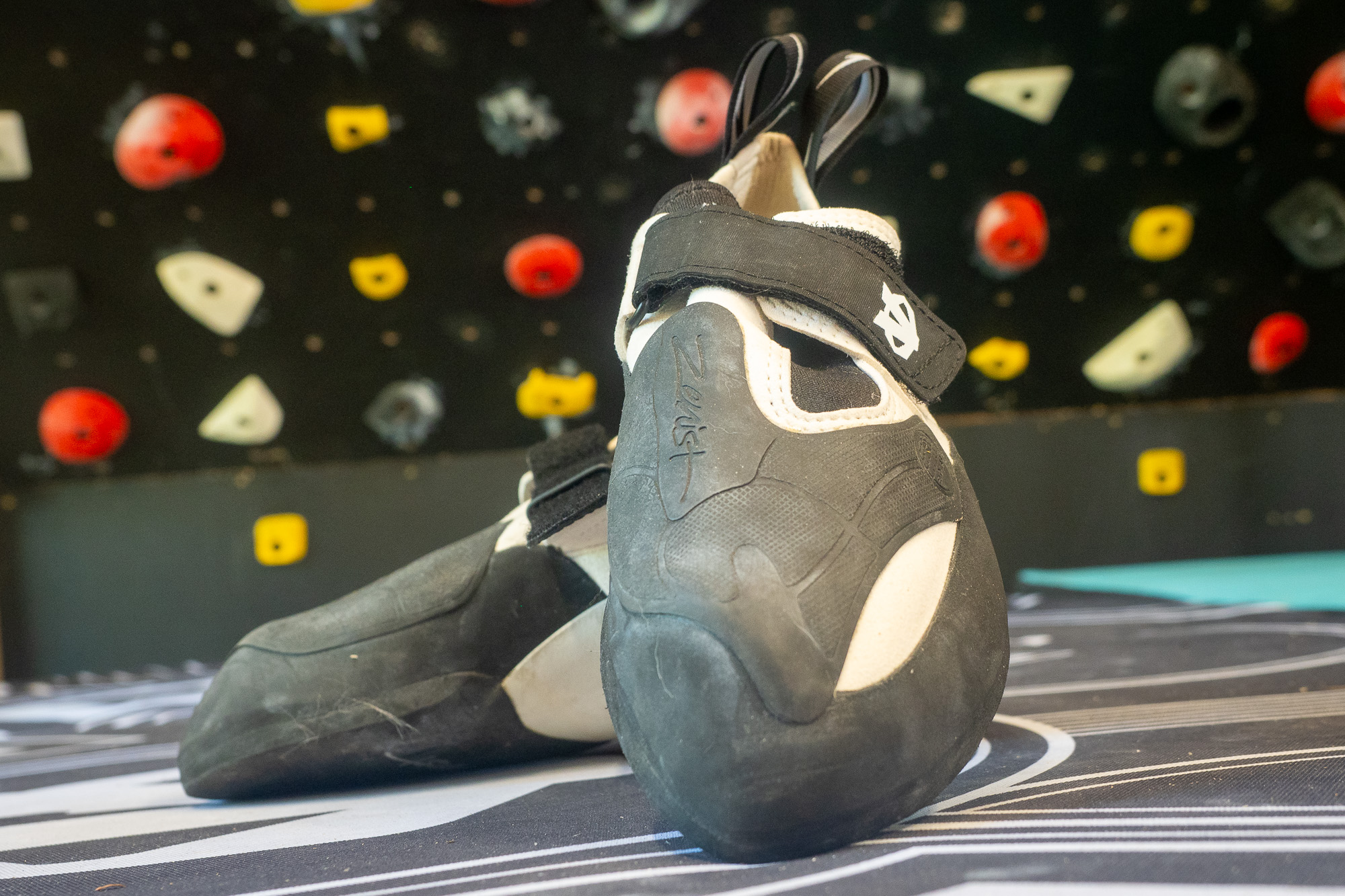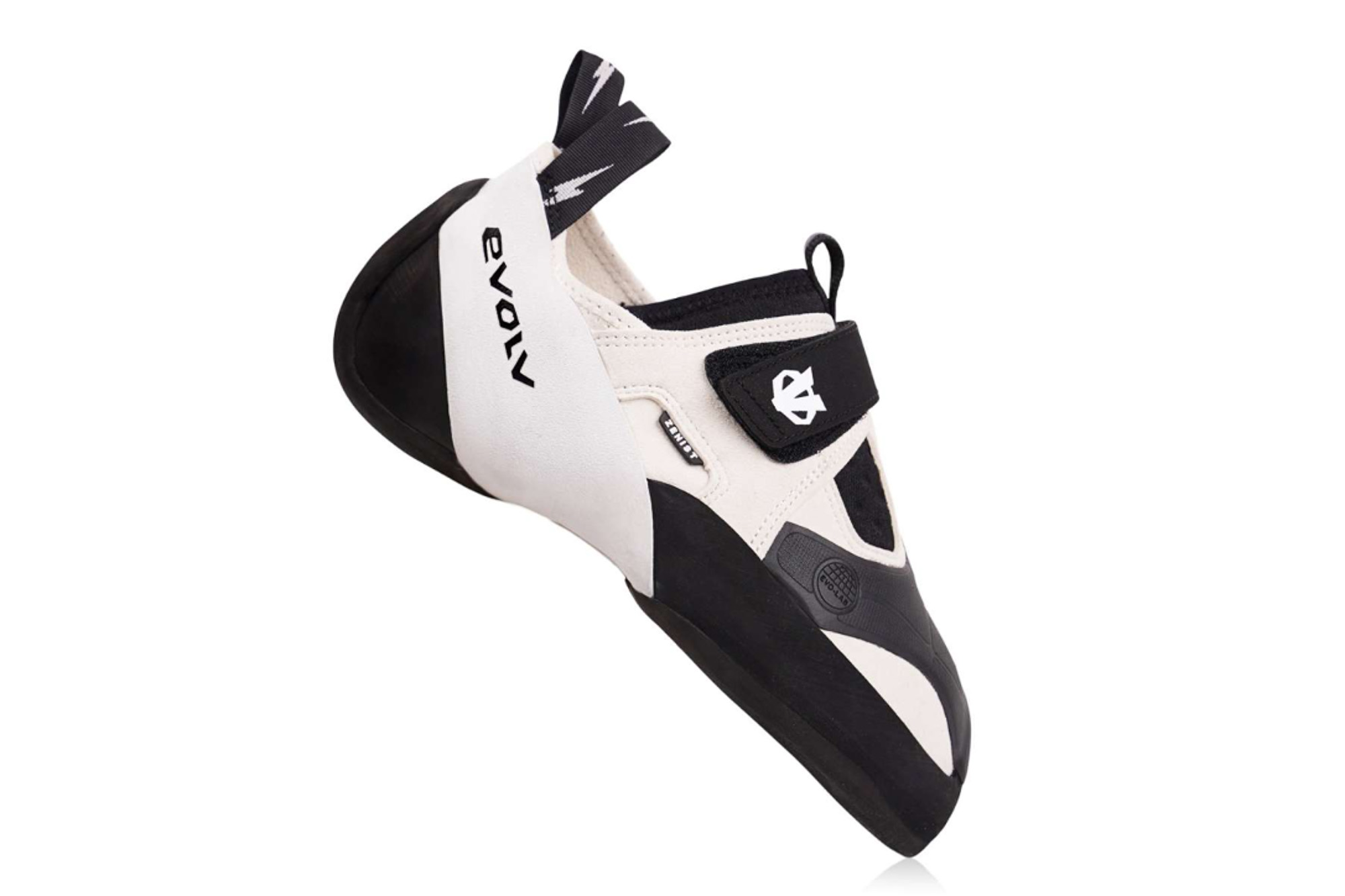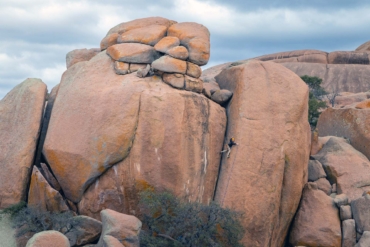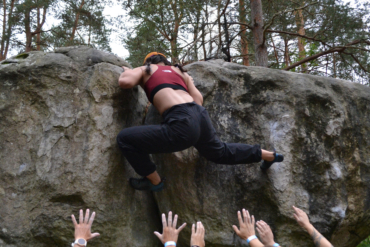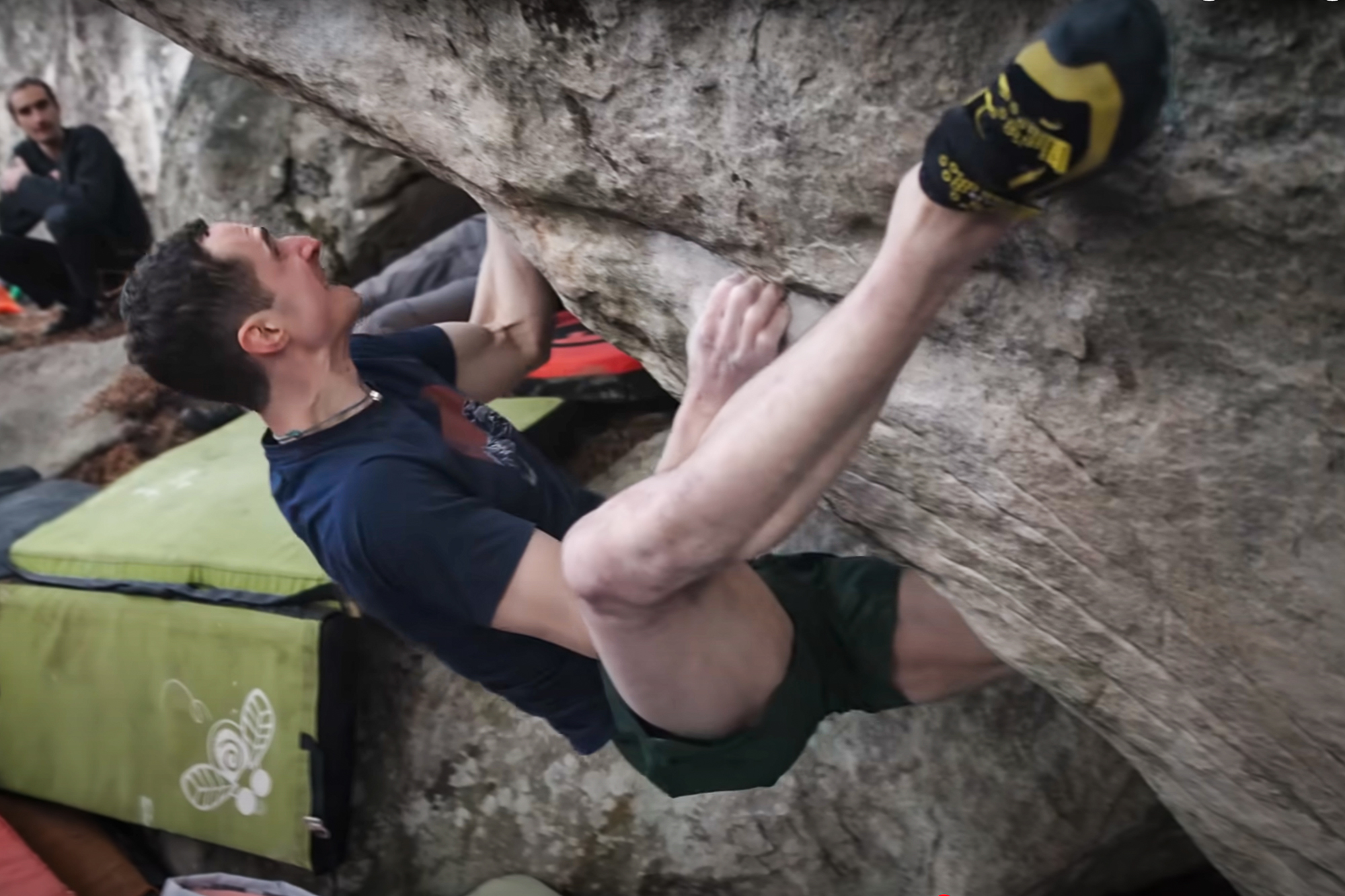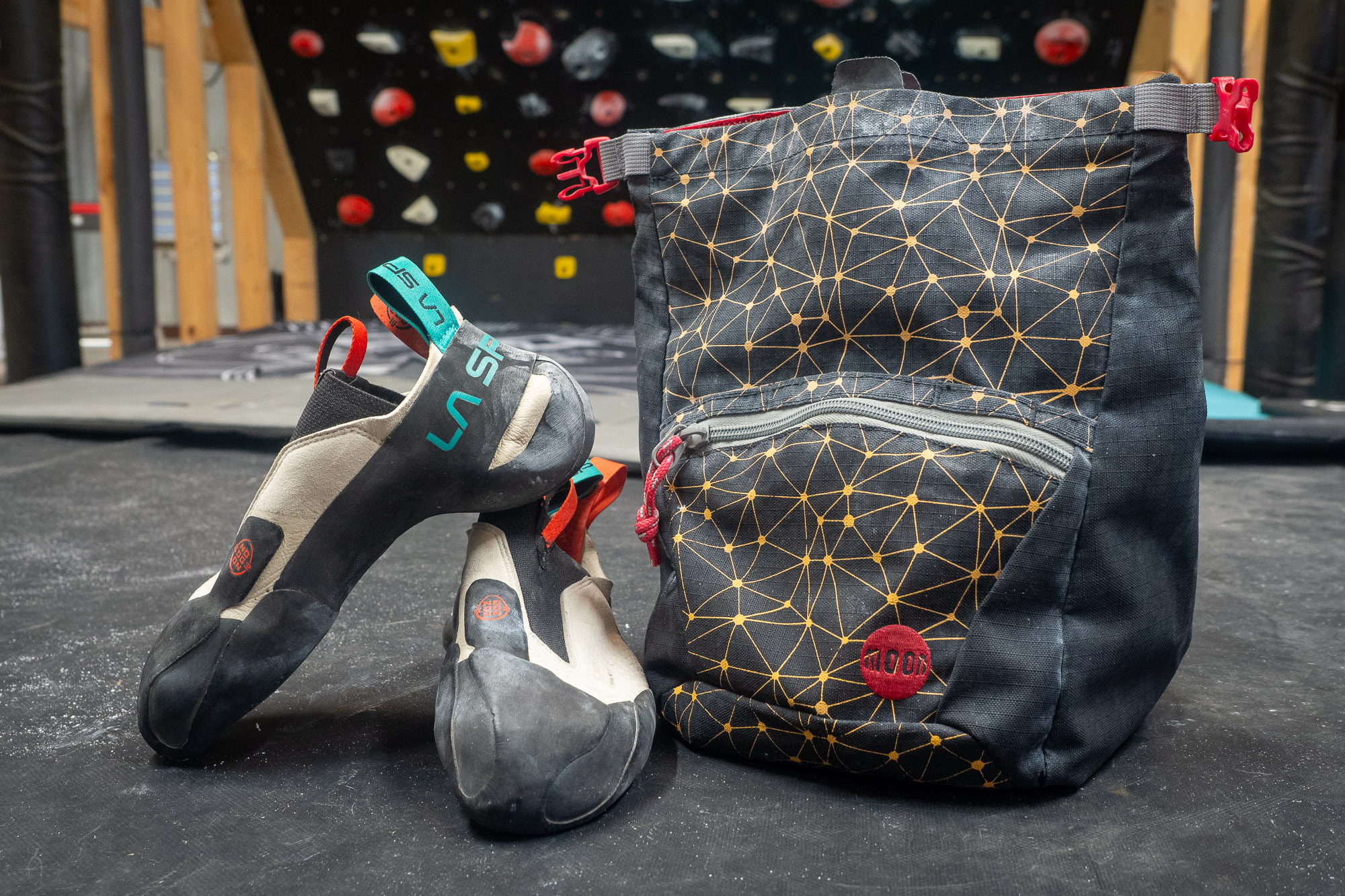Some bouldering shoes, especially ones aimed at competition or training, have become so soft that they feel like socks with rubber on them. Yes, they are so sensitive, but they also have almost no support and can disintegrate quickly under hard use.
I tested the Zenist exactly as its claims demanded. I trained in them on multiple home and gym training boards and competitive-style gym boulder problems. The shoes were used almost exclusively at my limit, and I hammered them for 6 months.
In short: The Evolv Zenist is indeed soft, making it super-sensitive and pliable. These attributes make it well-suited for training on boards and plastic at the limit when it was critical to load and feel the adhesion to tiny or non-positive holds on steep angles. But they aren’t so soft that I felt a lack of support or durability. And, given the trend toward $200+ high-performance climbing shoes, the price is reasonable.
- Closure: Single Velcro strap
- Weight: 1 lb., 3 oz., size 44
- Upper material: Synthetic
- Rubber type: 3.5mm TRAX
Pros
- Soft and sensitive without being flimsy
- Just enough structure for long training sessions
- Durable for a soft shoe
- Great fit for classic "duck foot"
- Low-volume version available
Cons
- Not good for edging on smaller footholds
- Not a good fit for higher volume feet
Evolv Zenist Fit
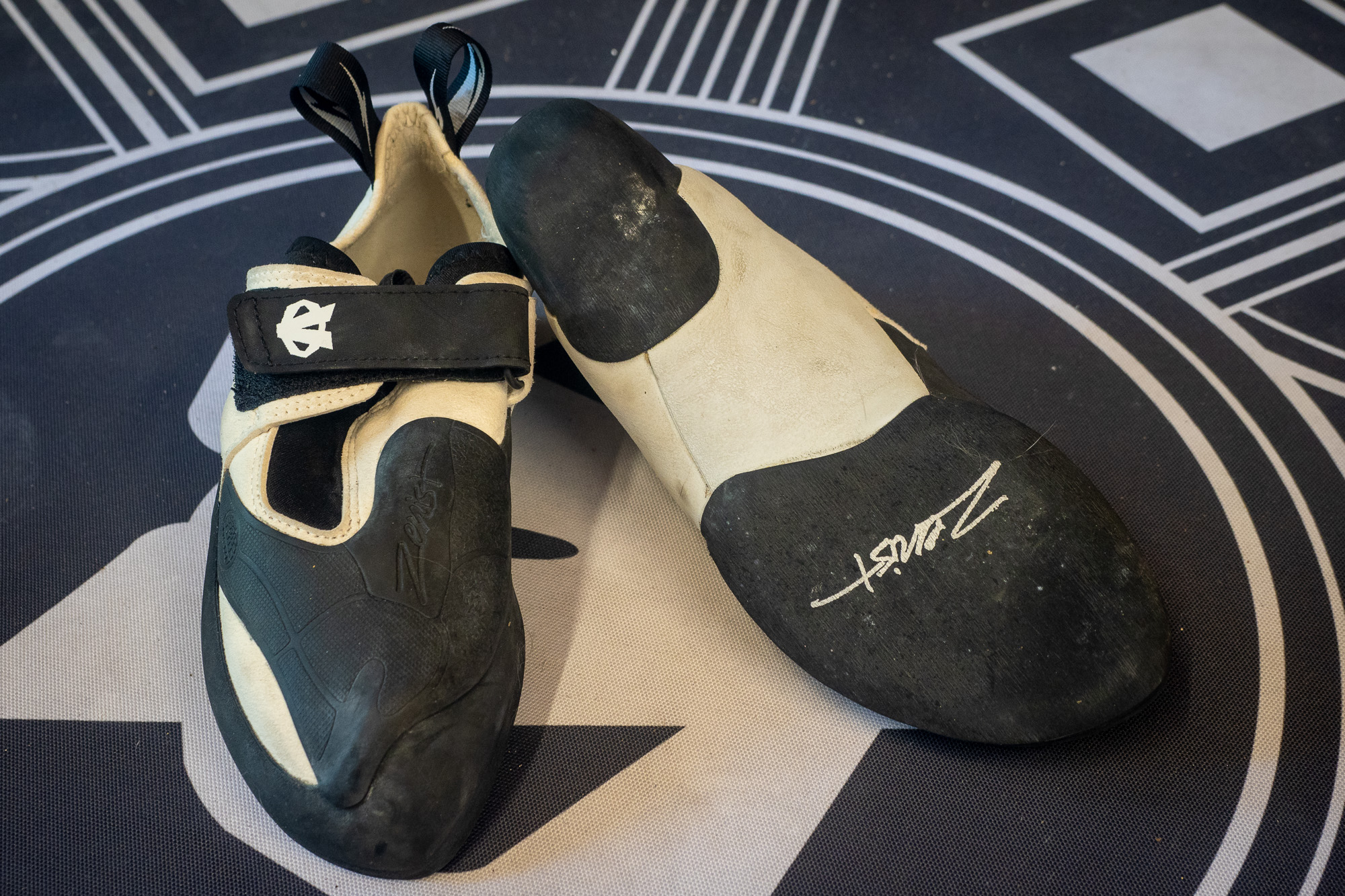
General Shape and Volume
I have the typical “duck foot”: narrow heel, wide forefoot, but thin from top to bottom. Evolvs have traditionally matched my foot shape and volume extremely well. And the Zenist was the same; both the outsole and upper followed the contours of my foot with precision.
Evolv offers the Zenist in a normal version and a low-volume (Zenist LV) version, and it sent both. They both fit well enough for me to use at my limit, and using both versions proved fruitful, which I’ll describe later.
The fit and initial feel of the Evolv Zenist was decidedly on the performance side. My toes were squeezed together, and there was no free space anywhere, giving the shoe a sensitive feeling before even toeing down on anything.
The tensioned heel rand drove my foot forward with just enough force to let me know that when I did toe down, I could generate plenty of power at the front lip of the shoe. The rand tension wasn’t painful, but it was enough to tell me it was time for business.
Other Fit Notes
The “bump out” over the big toe knuckle gave it the room needed to expand upward and remain comfortable with the appropriate amount of curl for a shoe aimed at higher grades on steeper terrain.
The soft synthetic upper, 3.5 mm split outsole, and 1mm half-midsole delivered an initial feeling that the shoe would conform as desired, whether that be twisting along the long axis for things like drop-knees or curling my foot downward for clawing holds on the steeps. Notably, the upper and outsole weren’t flimsy-feeling, as they can be on uber-performance bouldering shoes.
For reference, I wear a men’s size 10 running shoe, and the 10.5 U.S./44 Zenist was the correct fit. The Evolv site recommends ordering the same U.S. size for a performance fit and adding half a size for a snug fit that can be worn for an entire session. However, I felt that if I had ordered a 10, it would have been too tight, even with a performance mindset.
The Evolv Zenist and Zenist LV in 44 both weigh a verified 1 pound, 1.3 ounces per pair.
Evolv Zenist Performance
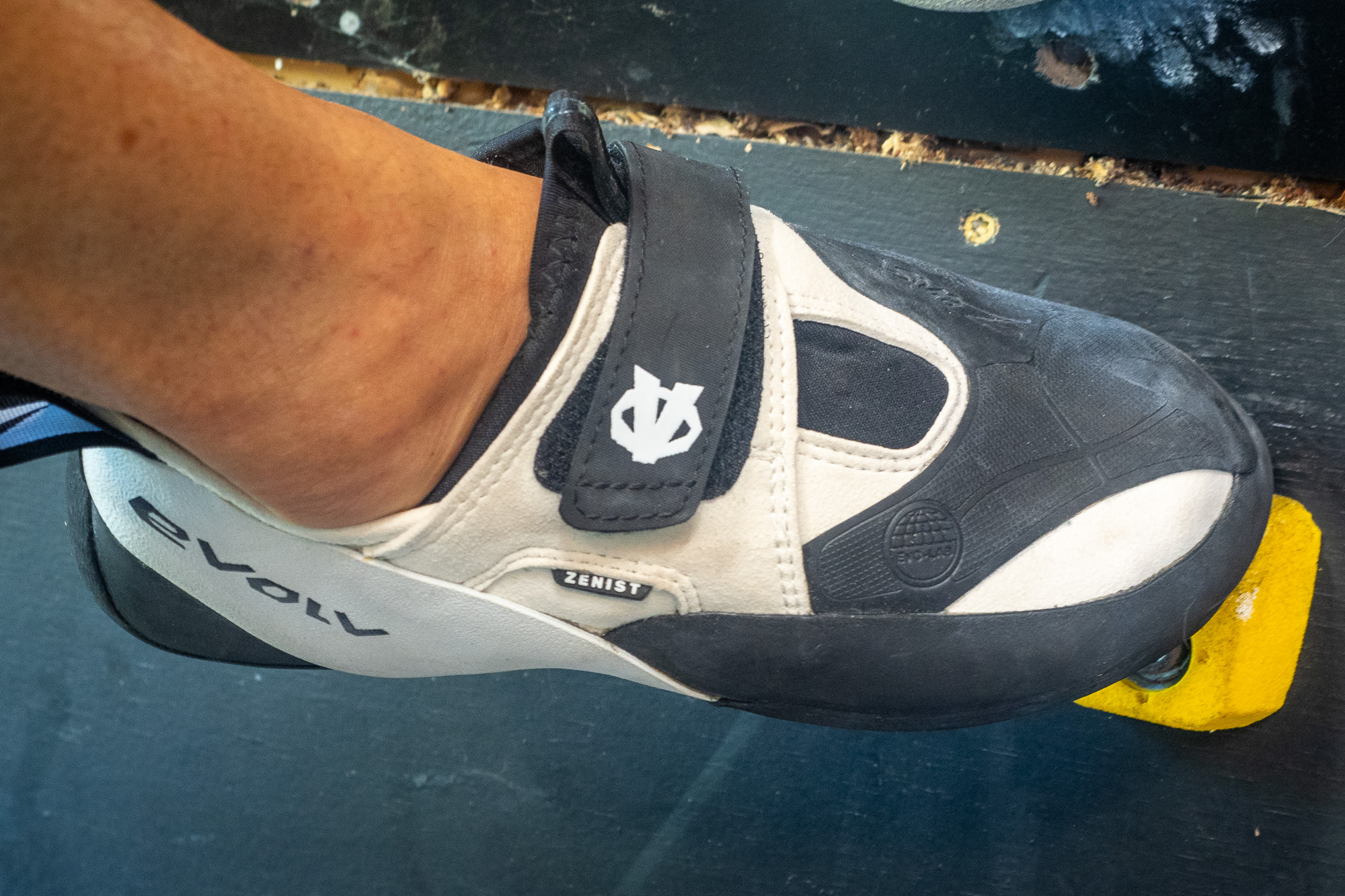
I immediately agreed that the Zenist was Evolv’s softest shoe. It felt much softer than the recently released Evolv V6 and Zenist Pro but was still much more structured than the SCARPA Furia Air, the softest shoe I’ve ever used.
Evolv has a sensitivity versus power rating, which is called the Power Sensitivity Rating (PSR). It ranges from 1 to 10: 1-3 represents Evolv’s most sensitive models, 4-7 represents the versatile shoes, while 8-10 is the most powerful (in terms of edging). The new Zenist is, of course, rated 1.
Sensitivity
This softness translated to great sensitivity on the training boards. The yellow, non-positive starter feet on the Moonboard are purposely tenuous. With these shoes, I was acutely aware of the contact and pressure I was applying during desperate sit-starts.
I could discern when I was at the limit of rubber-to-plastic adhesion. At times, this predictability was the difference between sticking the opening move or not. Ditto on the rounded wood holds that are part of my Moonboard hold set. Sensitivity was the strong suit of the new Evolv Zenist.
But there was just enough structure to keep my feet from getting too fatigued during 90-minute Moonboard sufferfests. I have been climbing for decades and consider my feet to be strong.
But with even softer shoes like the SCARPA Furia Air, sometimes I would stop training because I couldn’t apply pressure to small nubbins after the first hour. The lack of structure in softer training slippers had rendered my feet into limp noodles. Not so with the Zenist. I had the sensitivity, but I had just enough support for long sessions.
Edging
But softness, as always, means edging suffers, and that it did. On thin edges (3mm or less) under higher loads, I could feel the shoe start to roll no matter how rigidly I held my foot. Sometimes, I just defaulted to smedging (smearing with the edge) when I knew I couldn’t strictly edge.
But the Evolv Zenist is purposely soft, and I didn’t expect it to edge well. However, the Zenist edged better than softer shoes, which I attributed to the 1.0mm half-midsole and 3.5mm outsole. Some softer shoes have no midsole and thinner outsoles.
Heel Hooks, Toe Hooks, and Other Foot Antics
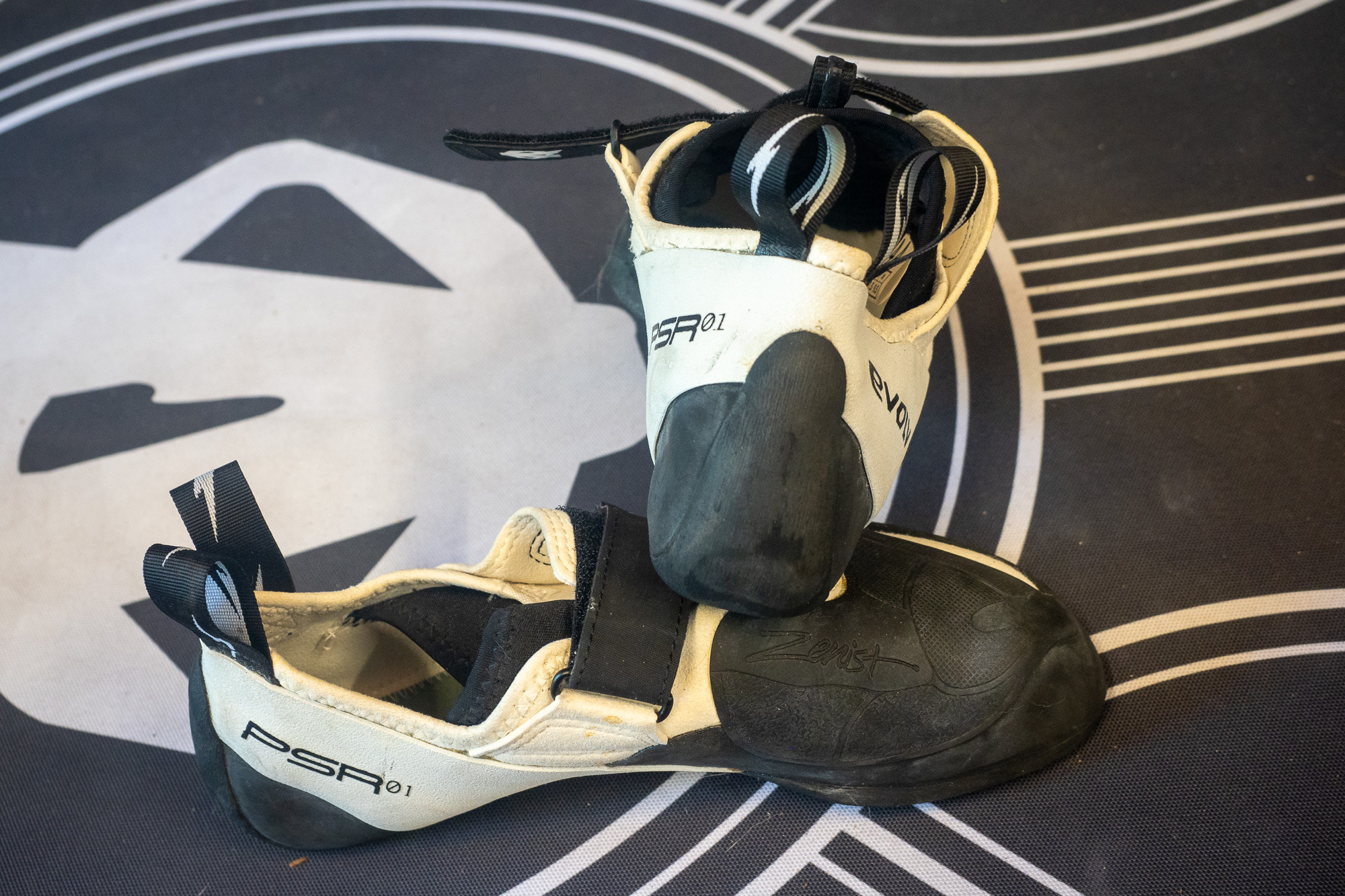
The softness also meant I could contort my foot when it was required. On problems steeper than 40 degrees, I often found myself curling my toes down and being able to hook the hold’s edge or pocket. The Zenist isn’t that downturned, but the ability to alter the shape of the shoe with my foot delivered the clawing ability required.
The upper has a very generous rubber patch, and the shoe also conformed in the opposite direction to take advantage of this during the fashionable toe-hooking antics on modern boulder problems. Again, the Zenist isn’t as soft as some other shoes I’ve tried, but the limited amount of structure helped keep some toe hooks from being painful.
Evolv heels fit my narrow heel great, which leads to confidence during heel hooks, and this shoe was no different. The simple structure had no gaps around my heel, and there was just enough rubber thickness and rigidity to keep them from pain. I didn’t get the dreaded heel cup roll or fold, even under hamstring-straining tension.
What About the Zenist LV?
Evolv generously sent both the “normal” Zenist and the LV version, both in 44. The LVs were decidedly tighter all around other than length. Both versions had the “performance fit” feel to me, but the LV version was just a tad more “performance.” The added tightness around almost every millimeter of my foot added a touch of sensitivity and power.
After alternating between the shoes for weeks, I concluded that the “normal” Zenist would be my go-to training shoe. I could keep them on for up to 90 minutes without problems, backing my foot out occasionally, and I wasn’t in any pain.
The Zenist LV would be my “redpoint” shoes, meaning when I was up against my limit and the goal was to send the rig. I had to at least undo the single Velcro closure strap and back my foot out after a few attempts. If I left them on for 15 minutes, I had some pain. So, to me, the Zenist LV broke out of the “training” category and rose up into the “boulder-sending” echelon.
Conclusions on the Evolv Zenist
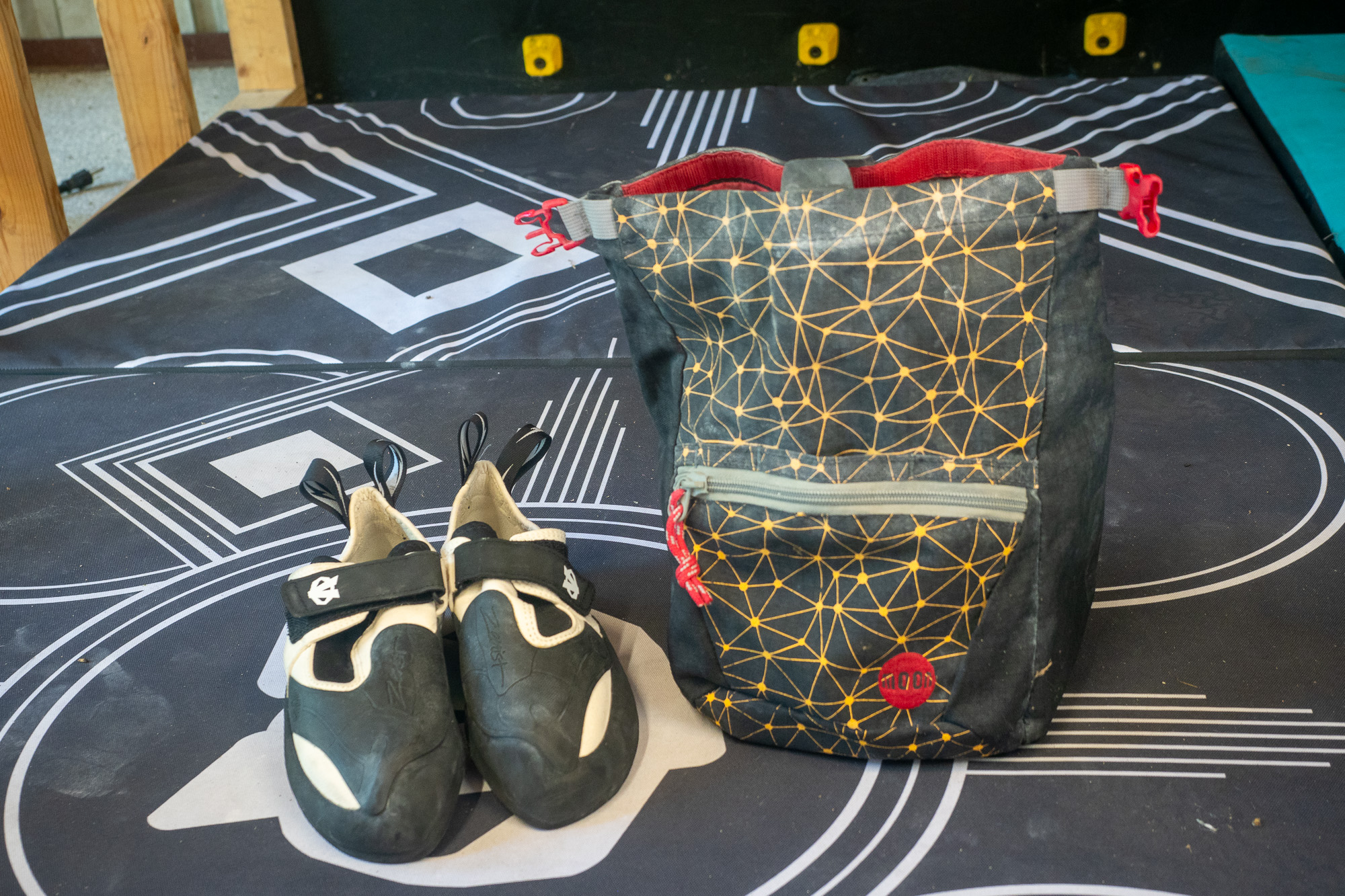
As per brand PR, I agree that the Evolv Zenist excelled at bouldering and training. Evolv’s particular elixir of softness and sensitivity, with just enough structure to power through training sessions on boards or gym sets, was effective while remaining appropriately comfortable. There are softer shoes with greater sensitivity and pliability, but that comes at the cost of support and, often, durability.
Would I climb outdoor rigs with the Zenist? I would if the problem is steep, short, and difficult. If the boulder problem was longer than a handful of moves or less than around 40 degrees overhanging, I would want more comfort (more generous fit) and support than the Zenist provided.
However, on the boards and in the bouldering gym, where I spend most of my climbing time, the Evolv Zenist was an outstanding training partner. And the MSRP of $179 is attractive in today’s high-performance climbing shoe market — especially considering robust material choices and construction that indicate a long lifespan. Indeed, over 6 months of continual use, the Zenist held up remarkably well, much more so than other shoes in the category.
